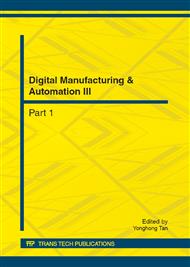p.987
p.993
p.998
p.1002
p.1006
p.1010
p.1016
p.1021
p.1029
Measurement & Control of Pulverized Coal Concentration in Exhaust Pneumatic Convey System
Abstract:
Pulverized coal firing boilers are widely used in power plants. Coal is pulverized into very fine particles and then mixed with primary air in horizontal pipes in the case of exhaust pneumatic convey system. The pulverized coal particles are conveyed by primary air to the burner and burn in the furnace. The concentration of pulverized coal in primary air should be well controlled to keep the safe and economic operation of the boiler. Credible measuring and controlling system is needed in engineering applications. Investigation of the mixing process shows that the pressure of primary air drops rapidly within the process, which gives the possible way to determine the pulverized coal concentration. The rapid pressure drop is mainly due to the acceleration of the pulverized coal particles. With energy balance analysis, study of the relationship between the mass flow rate of the pulverized coal and the pressure changes within the mixing process is done. The governing equation is achieved and the method of using two sections to measure the flow is proposed. The measuring and controlling system can be established according to the method. As a result, the measuring and controlling method provides a new way to meet the needs of engineering application.
Info:
Periodical:
Pages:
1006-1009
Citation:
Online since:
July 2012
Authors:
Price:
Сopyright:
© 2012 Trans Tech Publications Ltd. All Rights Reserved
Share:
Citation:


